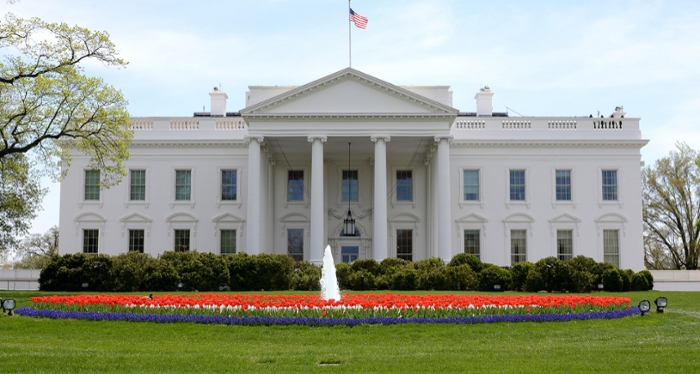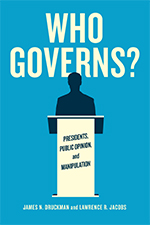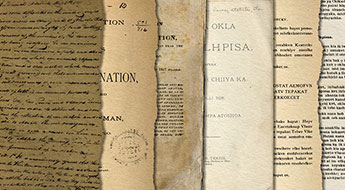Who Governs?
IPR political scientist James Druckman reveals how presidents manipulate public opinion
Get all our news
Political elites are not using polls simply to gauge the pulse of the country, but they’re using polls strategically to plot their own rhetorical strategy.”
James Druckman
IPR political scientist

A new book describes how three presidents manipulate public opinion to increase support for their policies.
As American voters turn toward electing their 45th president in November, they likely see themselves as casting votes for a candidate who will best represent “the people.” But just how much do presidents reflect the will of the people? A recent book by IPR political scientist James Druckman and the University of Minnesota’s Lawrence Jacobs deploys innovative research that explores how presidents manipulate public opinion to drum up support for their policies.
In Who Governs? Presidents, Public Opinion, and Manipulation (University of Chicago Press, 2015), Druckman and Jacobs delve into the “secluded backrooms” of presidential decision making, assembling evidence from the archives of three modern U.S. presidents: Lyndon Johnson, Richard Nixon, and Ronald Reagan. In doing so, the researchers overturn the central doctrine of elite governance—that political elites are our country’s “best hope” who will use their “extensive knowledge, broad experience, and wisdom to serve the country’s best interests."
Rather, their archival digging points to evidence that that these three presidents measured, and even manipulated, public opinion to secure Americans’ support for them and their policies.

“Political elites are not using polls simply to gauge the pulse of the country, but they’re using polls strategically to plot their own rhetorical strategy,” Druckman said.
For instance, the authors show that Johnson tried to distract attention away from Vietnam with his anti-poverty initiatives. Nixon highlighted his aggressive military initiatives to build perceptions of his strength, and Reagan catered to factions in an effort to draw new swing groups into an expanded conservative base.
By innovatively combining public opinion and archival information, Druckman and Jacobs outline these presidents’ deference to special interests and political insiders, as well as the impact and limits of their efforts to move Americans to support them.
Presidents and Polls
Presidential polling began its rise during the Kennedy administration and grew progressively more specialized in its ability to track public opinion. Analyzing who and how the White House polled allowed Druckman and Jacobs a glimpse into how presidents target specific groups of potential voters.
Taking the case of Reagan, they trace how he specifically targeted high-income groups as potential supporters. Not only did he collect more data on the affluent than on lower- and middle-income groups, but he was also more likely to tailor his policies to theirs: He was more than five times as likely to adopt a conservative stance on a topic when wealthy voters supported it than when the general public did.
Presidents and Priming
Polls giving the White House insight into the public’s policy preferences also offered the opportunity to “prime,” or manipulate, that public. Presidents highlighted the importance of issues for which their policies had public support, in the hopes that this would obscure more unpopular policies.

Druckman and Jacobs find that the success of these priming attempts varied widely depending on factors such as the strength of public opinion already surrounding an issue, the role of the media, and the president’s own credibility. For example, when Johnson stressed poverty reduction as an important issue in his speeches, the public rated it as more important—but the president’s attempts to distract the public from events in Vietnam utterly failed.
“When there is a policy that is so salient and the public is so engaged in it, there’s really little that the president can do,” Druckman said. “How presidents use polls and what they want to do doesn’t always translate into what they can do.”
Despite these limitations, priming challenges venerable ideals of American democracy, Druckman and Jacobs argue. “It is time to break from the passive form of representation that empowers elites and institutions to ‘speak for’ citizens and assumes a beneficent ‘re-presentation’ of existing public views,” they write.
James Druckman is Payson S. Wild Professor of Political Science at Northwestern University, IPR Associate Director, and an IPR fellow. Lawrence Jacobs is Walter F. and Joan Mondale Chair for Political Studies at the University of Minnesota.
Published: July 18, 2016.


